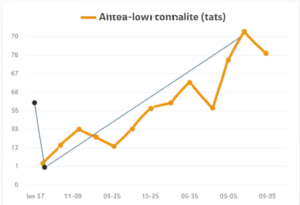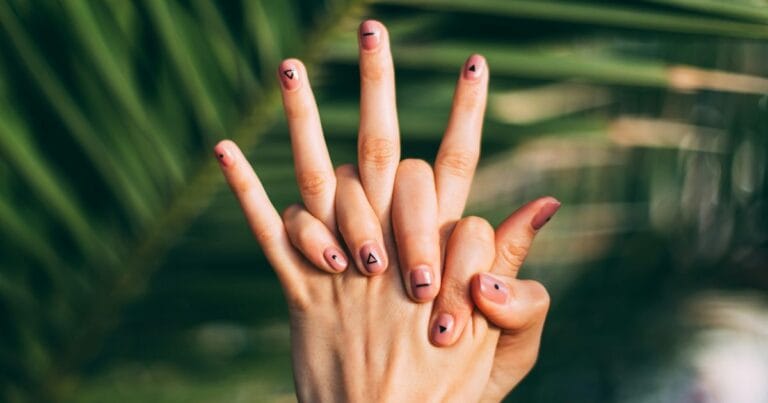A simple hand exercise, often overlooked, can reveal a surprising amount about your overall health and how well you’re aging. It’s not about how many push-ups you can do or how fast you can run, but rather about the strength of your grip. This seemingly basic measure is emerging as a powerful biomarker, offering insights into your muscle mass, bone density, and even your risk of chronic diseases.
The Power of Grip Strength
Grip strength, measured using a device called a hand dynamometer, is more than just a measure of how tightly you can squeeze. It’s a key indicator of overall muscle strength and mass, which naturally decline with age. This loss of muscle mass, known as sarcopenia, typically begins around age 30, with a loss of 3% to 8% per decade, accelerating after 60. Reduced grip strength is not just a sign of aging; it can also be a warning sign for a higher risk of chronic diseases and even a shorter life expectancy.
Multiple studies have shown a strong correlation between grip strength and various health outcomes. A 2015 study published in The Lancet, involving almost 140,000 adults, found that reduced handgrip strength was closely linked to mortality and was a better predictor of cardiovascular death than blood pressure. This suggests that a strong grip is not just about physical prowess; it’s a reflection of overall health and well-being.
Grip Strength as a Biomarker of Aging
Grip strength is increasingly recognized as a reliable biomarker of biological age. Research suggests that individuals with weaker grip strength tend to have a higher “epigenetic age,” meaning their bodies are aging faster at a cellular level. This accelerated aging makes them more susceptible to illnesses and death. Conversely, those with stronger grips often exhibit slower aging, better health, and stronger immune systems, allowing them to fend off diseases and illnesses more effectively.
A study from the University of Michigan further solidified this connection, finding that low grip strength was associated with accelerated DNA aging. This research emphasizes that grip strength is not just a consequence of age, but also a reflection of the pace at which your body is aging. Therefore, maintaining good grip strength could be a protective measure against age-related diseases and functional decline.
What Does Your Grip Strength Say About You?
Reduced grip strength can be indicative of a variety of health issues, including:
Muscle Loss (Sarcopenia): As we age, we lose muscle mass, and grip strength is a direct reflection of this decline. Sarcopenia not only affects physical strength but also increases the risk of falls, fractures, and disability.
Cardiovascular Disease: Weak grip strength is linked to a higher risk of heart disease and stroke. It is even considered a stronger predictor of cardiovascular death than blood pressure in some studies.
Reduced Bone Density: Grip strength is correlated with bone mineral density, meaning that a weaker grip can suggest a higher risk of osteoporosis and fractures.
Cognitive Decline: Some studies have found a link between grip strength and cognitive function, suggesting that grip strength may also reflect brain health.
Frailty: A weak grip is a sign of frailty, which is associated with a higher risk of dangerous complications and hospitalizations.
Nutritional Status: Grip strength can be an indicator of overall nutritional health.
Improving Your Grip Strength
The good news is that grip strength can be improved with targeted exercises and a healthy lifestyle. Here are some effective ways to enhance your grip:
Hand Exercises
Squeezing: Use a hand grip strengthener, a stress ball, or even a squash ball and squeeze it for 10 minutes per hand, twice daily. This works the flexor muscles in the forearms.
Ball Squeezes: Squeeze a ball that fits in your palm for about 5 seconds and then release. Repeat this 10-12 times
Towel Wringing: Wring out a wet towel, using both hands to twist and squeeze, which works many muscles in the hands, wrists, and forearms.
Towel Squeezes: Hold a towel in one hand and squeeze it tightly then release and repeat for both hands.
Finger Exercises: Perform exercises like finger curls, assisted finger abductions stretches, thumb flexions, and hand open/closes.
Wrist Exercises: Try wrist flexion/extensions and wrist radial/ulnar deviations.
Rolling Movement: Place a water bottle or can in your hand and roll it around.
Grip and Release: Practice picking up small objects like pens and coins.
Strength Training
Weightlifting: Incorporate exercises like deadlifts, which work the forearms and improve grip strength. Vary hand grips and weights to maximize gains.
Pull-ups: Use a towel or rope draped over a pull-up bar for a thicker grip to challenge hand strength.
Wrist Curls: Perform wrist curls with a barbell or dumbbells, engaging different forearm muscles by using both palms facing up and down.
Hand Grippers: Use hand grippers and squeeze the handles until they touch, holding briefly before releasing.
Lifestyle Factors
Nutrition: Focus on a healthy diet with enough protein to support muscle growth.
Overall Exercise: Engage in regular physical activity that includes aerobic exercise and strength training.
Stretching: Regular hand and wrist stretches are important. For example, stretch your fingers back while pressing your palms on a desk or lifting your palms off the desk to emphasize your fingers.
The Importance of Early Action
Grip strength typically starts to decline around age 50, so this is an excellent time to focus on this metric. However, the earlier you start, the better. By incorporating grip-strengthening exercises into your daily routine and maintaining an active lifestyle, you can positively influence your overall health and potentially slow the aging process.
Understanding the Numbers
While individual grip strength varies, general guidelines exist. One study defines weak grip strength as less than 26 kg for men and less than 16 kg for women. Average grip strength in the dominant hand for US participants, according to a 2018 study, is roughly:
- 18–24: Men: 47 kg, Women: 28 kg
- 25–29: Men: 48 kg, Women: 30 kg
- 30–34: Men: 46 kg, Women: 29 kg
- 35–39: Men: 47 kg, Women: 29 kg
- 40–44: Men: 47 kg, Women: 30 kg
- 45–49: Men: 42 kg, Women: 29 kg
- 50–54: Men: 44 kg, Women: 28 kg
It’s important to remember that these are averages, and other factors such as age, BMI, and overall fitness levels also play a role.
A Simple Test, A Powerful Indicator
Grip strength is a simple yet powerful indicator of overall health and vitality. By paying attention to this metric and taking steps to improve it, you can potentially protect yourself from a range of age-related diseases, improve your physical function and ultimately improve your quality of life. So, grab a hand dynamometer, a stress ball, or even a towel, and start testing your grip – it could be the key to understanding how well you are aging.







